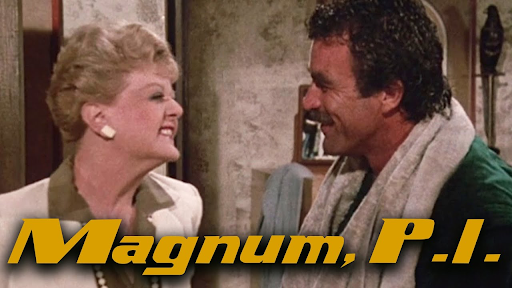Five People That Should Make Up Your Modern Day ZTNA Tiger Team
The importance of multidisciplinary skill set, and the teammates you’ll need to succeed – based on 80s TV crossover episodes!

As a kid who grew up on a steady diet of network TV in the 80s, I always got excited when a crossover was teased at the end of an episode. Take the original Magnum PI starring Tom Selleck. There were several. Magnum and Hawaii Five-O… classic. Simon and Simon on the case with Higgins and Thomas Magnum in 1982, that was a good one! And who could not forget Jessica Fletcher (Angela Lansbury) using her detective skills in episode ‘Novel Connection’! Another timeless crossover success!
When it comes to deploying Zero Trust, you need a similar approach. You need what I call the silo crossover episode! If you leave it to one silo or one group to evaluate, select, deploy and operationalize Zero Trust, your chances of success are going to be low. So, who’s on the team, who should you partner with to create your Zero Trust crossover show for success?
Based on my many conversations with prospects, customers and my network of peers, here is my recommendation for your killer crossover Zero Trust team.
The Modern Day ZTNA Tiger Team
1) First, start with a business champion. To bring a transformational security strategy like Zero Trust successfully from inception to production, you need someone who will provide top cover for the project. The business champion is the go-to resource when (because it will) the project goes sideways. Often, this can be due to competing business priorities, resource conflicts, alignment between IT silos and so on. We’ve all been there and seen the impact one person can have on a project, good and bad. The business champion is the person you need to clear the lanes for success. Make sure you have one!
2) The second team member is likely to be the most important. You need an excellent Business Analyst. You need someone who can act as the bridge between the company and the IT team. To quote one of the father’s of Zero Trust, Paul Simmonds, “Zero Trust is not an IT Security project, it is a Business Project”. What Mr Simmonds is referring to is at the end of the day, the project is “all about the data” and making risk based decisions based on the identity of all the components in the transaction chain. So, you will need a person who is adept in breaking down business processes, understanding the critical components and helping IT to design a solution that is based on “yes” vs slowing the business down or breaking a critical process. Select wisely here.
3) Next, is the security resource. A Zero Trust project is about changing the way security is viewed. Zero Trust flips the script on the traditional approach where a firewall is the demarcation line between resources which are trusted and untrusted. In today’s modern IT landscape, the utility of a firewall to secure, detect and protect the enterprise is waning quickly. This is because the crown jewels (people and data) now exist beyond the walls of the enterprise. With distributed applications and now a distributed workforce, these critical resources exist in every nook and cranny of the Internet. Therefore, the security engineer is essential to be the advocate of change. You need a resource who understands the technology options available. Can explain it in layman’s terms and knows how to leverage solutions such as zero trust private access, secure web gateway and cloud access broker as well as data loss prevention.
4) The fourth is one of the most critical resources. An identity engineer. As applications, as well as the workforce, get up and leave the corporate data center and corporate campus, creating and operating a solid identity program is essential to the project and the ongoing care and maintenance once the solution is deployed. Look for the resource who understands how identity can be leveraged in both SaaS and on-prem applications. A resource who is willing to do the dirty work of uncovering years and years of privilege debt. Meaning those employees who have moved around the organization and gained more and more rights even though these additional privileges are not required to perform their current job. You need a person who is technical but who is also willing to dig in with the operations team to both resolve identity debt and consider how they can make the operations team’s life simpler. This may sound like a unicorn but with the proper mindset and guidance, I’ve seen this sort of magic develop during a project!
5) The fifth member of the team must come from the end user compute team. It’s essential for someone to understand the world of devices, OSs, client software, posture checks and to know how to deploy and manage a fleet at scale. While the Zero Trust is a strategy you must also leverage technology to achieve your goals. One of the goals that must be foremost in your mind is setting up your workforce for success. Having the right person to guide the conversation and act as the voice of “user experience” is critical. I’ve seen a number of projects where the technology selection did not include the client technology team. The result is the project dies a stillborn death during the rollout and millions of dollars are never utilized because the impact on the customer, the employee, is so poor. Do not discount this role during the project.
The last two team members are also essential. Make sure to include the network team. Find a top-notch network engineer who understands remote access, campus and Cloud based networking. You need all of them to be successful in the arena of Zero Trust. While the remote access aspect is obvious, campus networking is thinking forward. As the world transitions out of the pandemic, workers will return on to the campus and branch. In that process, the enterprise will have an opportunity to rethink how to secure the campus and the branch. Legacy technologies like NAC will be heavily scrutinized as they are expensive to operate and brittle. Modern ZTNA solutions like the Security Service Edge (SSE) will soon become the answer as both the cost and operational simplicity will outweigh the heritage approach of the past. Don’t miss out on this opportunity!
The last member of the core team is the project manager (PM). Here, select wisely. A good PM is a difference maker. As the individual team members will also do their normal job duties, having someone to keep “all the plates spinning” is a must-have requirement. I’ve been on plenty of projects in which the outcome of the project was decided by the quality of the PM. Do your homework! Look for a person who is good at breaking down the tasks, has the gift of foresight to see if there is danger ahead and also, maybe most importantly, is diplomatic when working both within the team and outside the team. It is often the hard conversations which are required, which, in the end, save the day. Do your homework here. Get the best PM available. Don’t accept a lesser quality PM (and this is a great area to leverage your project champion)!There you go. Your core team for success with Modern Zero Trust!! If you have questions, please reach out. I am happy to work with you on your journey. Also, if you want to discuss your favorite crossover TV episodes from the 80s, hit me up on LinkedIn!



